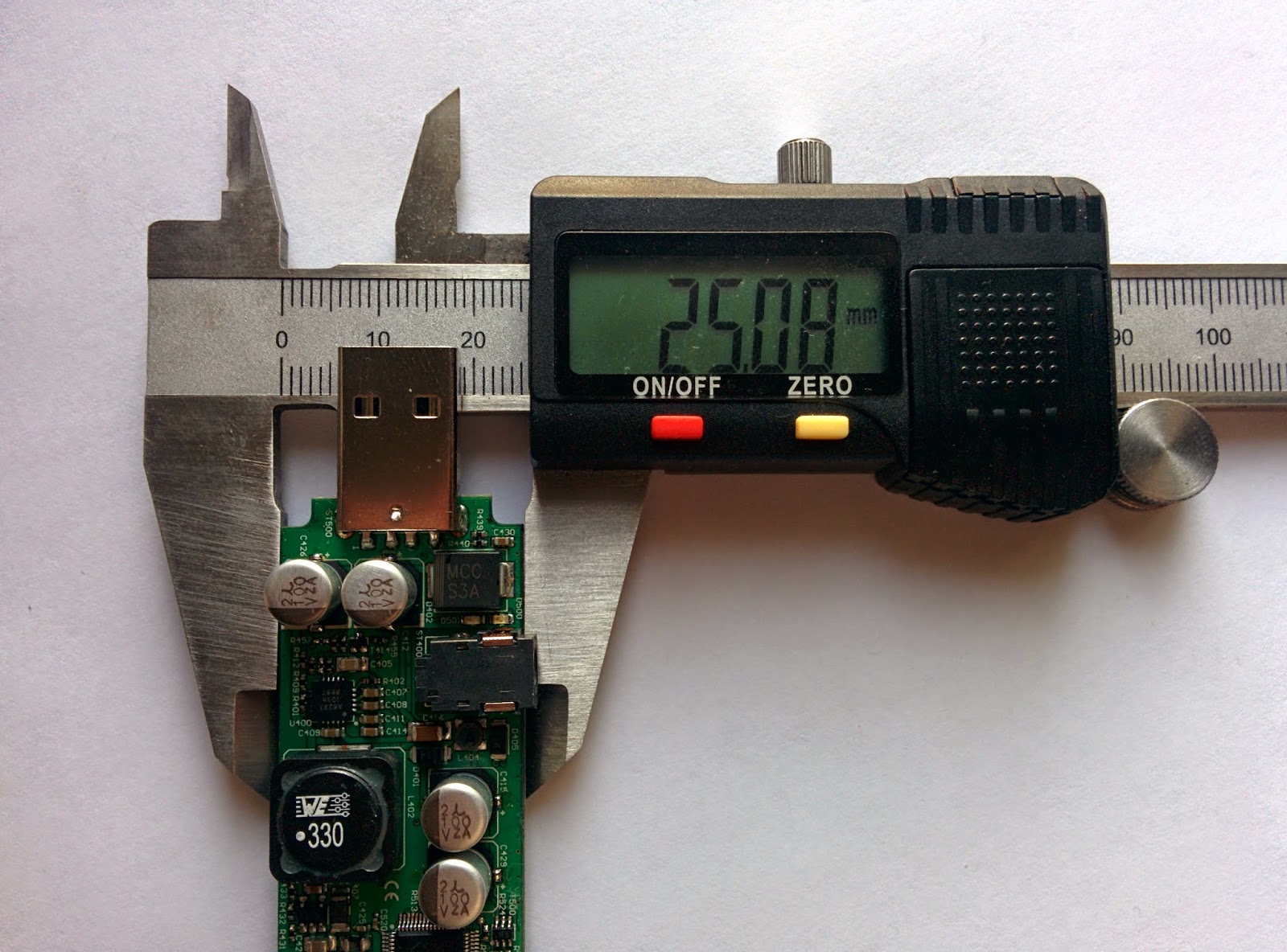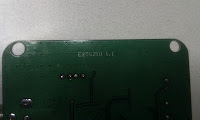PCTV DVB-S2 Stick (461e) teardown
 |
| PCTV DVB-S2 Stick (461e) |
Only differences between old and new version could be found from the device internals, where DTV chipset is changed to totally different one. Old model uses NXP TDA10071 & Conexant CX24118 demod & tuner combo, whilst that new one is build upon Montage M88DS3103 & Montage M88TS2022. 461e appeared to marked circa one year ago (around September 2013) and replaced old 460e quickly. 461e USB ID is 2013:0258, whilst 460e uses ID 2013:024f.
Initial Linux driver went into Kernel 3.14. Currently that device is one of the rare USB satellite receivers, having both good availability and drivers in mainline kernel.
Unfortunately I don't have a retail package, but only the stick itself. Retail package should include additionally remote controller and USB cable - which are those same coming with almost every PCTV Systems USB receiver. So lets forget all that extra stuff and take a look to device internals!
Key components:
Empia EM28178
Montage M88DS3103
Montage M88TS2022
Allegro A8293
General hardware design
Device is build on single PCB, having USB connector on other end and antenna connector on the another. There is surprisingly large amount of components, assembled to both PCB sides rather compactly. I wonder how there could be that much extra components needed for connecting few chips together... PCB is also rather big if you compare to most DVB-T USB devices, but DVB-S/S2 receivers tends to be bigger than DVB-T receivers always. I think it could be still even smallest USB satellite receiver currently.External 12V power supply is needed, as always for USB satellite receiver, feeding power to LNB. Similar (same?) power supply was used for old 460e too.
PCB upper side
 |
| PCTV DVB-S2 Stick (461e) |
Montage M88TS2022
 | |
| Montage M88TS2022 |
27 MHz clock needed is feed from crystal located another side of the PCB.
Montage M88DS3103
 |
| Montage M88DS3103 |
There is another very similar chip seen on some other PC receivers. That chip is M88DS3002. I suspect it is only earlier revision and differs marginally from the M88DS3103. Even before M88DS3002 there was M88DS3000 DVB-S/S2 demodulator, which is same chipset family, but differs more or less from M88DS3002/M88DS3103. There is existing Linux driver for old M88DS3000 too. M88DS3000 => M88DS3002 => M88DS3103.
M88DS3103 demodulator in conjunction with M88TS2022 tuner is very common DVB-S/S2 DTV chipset currently. I don't have clear vision how widely it is used for STBs or TVs, but for PC TV market it is in practice the only one chipset used at the moment.
Empia EM28178
 |
| Empia EM28178 |
In this picture there is remote controller receiver partly top of the EM28178. It is that quite big three pin component having long legs.
Required 12MHz clock is coming from crystal located another side of the PCB. Also eeprom, needed by bridge, is located another side. EM28178 loads configuration from the eeprom during power-up. That configuration contains USB ID amongst the other things.
Same EM28178 bridge chip was used for PCTV tripleStick (292e) receiver too.
Allegro A8293
 |
| Allegro A8293 |
Chips is controlled over I2C bus.
That same chip was used for older 460e model too.
PCB bottom side
 |
| PCTV DVB-S2 Stick (461e) |
Crystal near antenna is 27MHz and feeds clock for demodulator and tuner. Another crystal, center of PCB, is 12MHz for USB-bridge.
PCB printings:
Redshift
2000000-02 LF
pctv systems
12.000 MHz crystal
 |
| Xtal 12.000 MHz |
27.000 MHz crystal
 | |
| Xtal 27.000 MHz |
Microchip 24LC128
 |
| Microchip 24LC128 |
Alpha and Omega Semiconductor’s AOZ1360
 |
| Alpha and Omega Semiconductor’s AOZ1360 |
Component is passive and do not need a driver.
Linux driver
Linux driver has been in kernel since 3.14. Device driver consists of 4 chip drivers: em28xx, m88ds3103, m88ts2022 and a8293.Device needs firmware for M88DS3103 demodulator, which could be downloaded from here.












































































